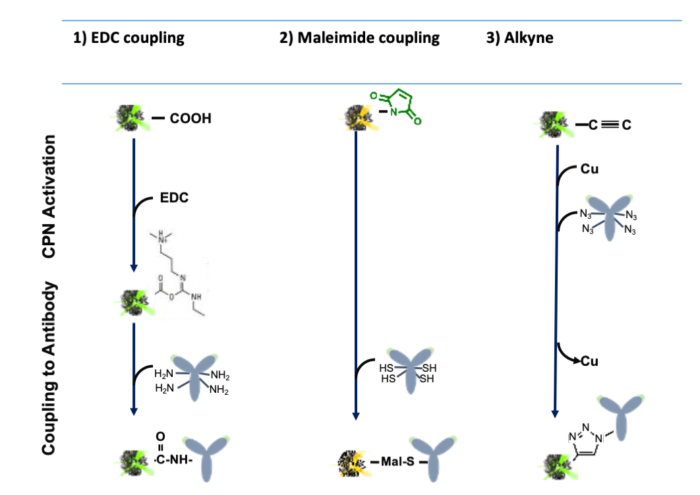Flow cytometry is a widely used technique for individually characterising cells by their light scattering properties with a range of fluorescently labelled markers. Flow cytometry allows cells to be counted, characterised and sorted, and has applications in many fields in life science and medicine, including diagnostics, haematology, virology and molecular biology.
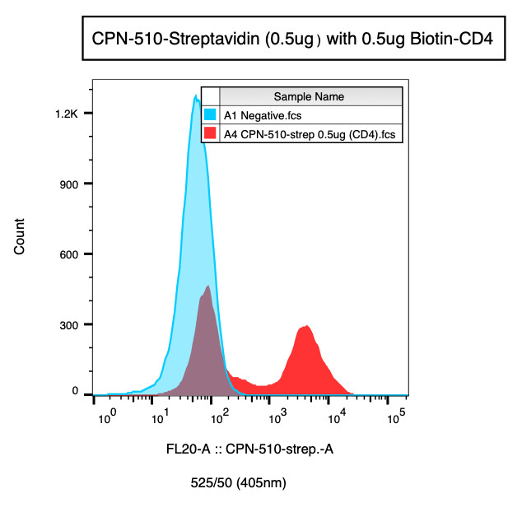
Conjugated Polymer Nanoparticles (CPNs™) in Flow Cytometry
Conjugated Polymer Nanoparticles (CPNs™) have a number of features that make them particularly useful as fluorescent probes for use in flow cytometry. Their superior fluorescence (up to 1000x brighter than Quantum dots and Q-beads) allows cellular markers expressed at low levels to be readily detected, enabling the study of low abundance surface antigens. The range of CPNs™ with unique excitation and emission spectra enables their use with additional channels in existing detection panels. This includes CPNs™ that can be excited by 808nm lasers and emit in the infrared range (900nm or 1130nm).
Their superior brightness means that individual CPNs™ can be resolved using flow cytometry, enabling their use as calibration beads. The figure shows CPN™ 510, linked via streptavidin/biotin to an anti-CD4 antibody labelling the CD4+ cell subpopulation.
CPNs™ can label cells that require challenging or prolonged isolation techniques and storage conditions as they are resistant to photobleaching, extreme temperatures or pH and fixation methods.
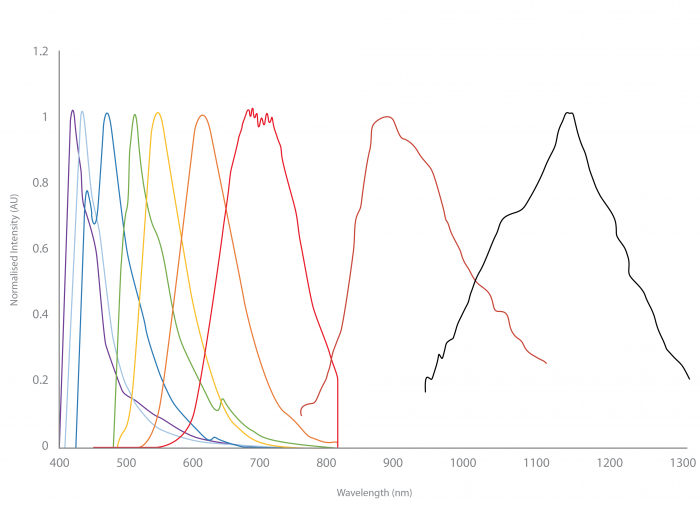
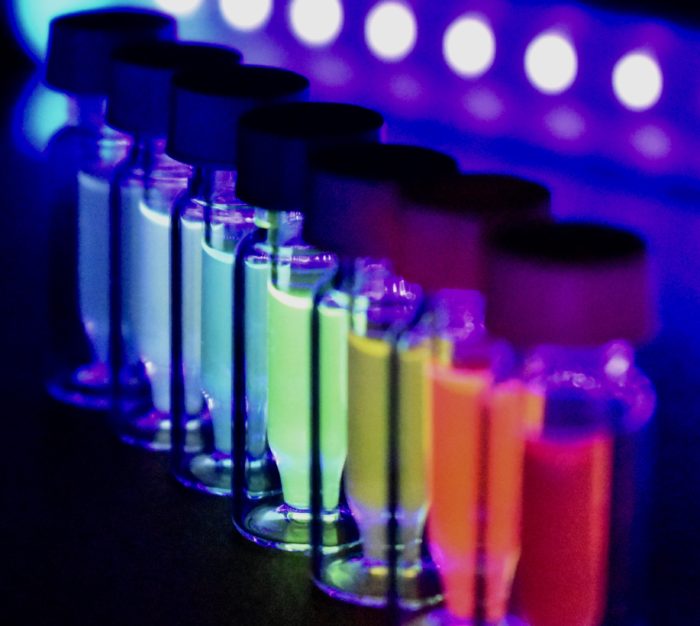
Spectral Flow Cytometry
Spectral flow cytometry differs from conventional flow cytometry by capturing complete emission spectra across continuous wavelengths, rather than splitting the emissions into separate wavelengths. Optical detectors collect the emission spectrum of every molecule, allowing analysis of multiple parameters simultaneously whilst managing auto-fluorescence. Spectral flow cytometry therefore provides advantages in cell population analysis and complex assays, where our CPNsTM can also add extra benefit.
Their unique spectral profiles, coupled with their intense brightness, make our CPNsTM ideal probes for use in spectral flow cytometry.
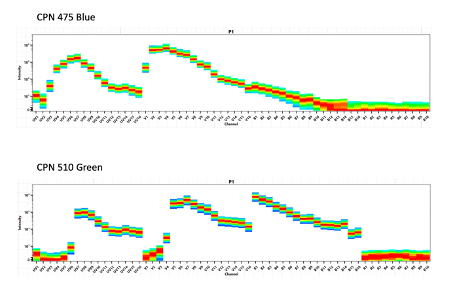
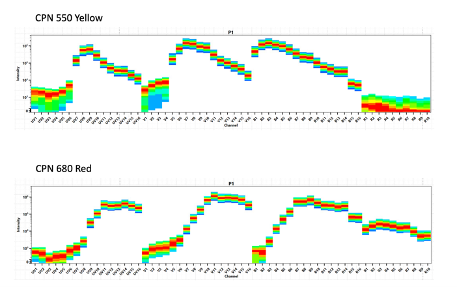
The full spectrum fluorochrome signatures for CPNTM 475 (Blue), CPNTM 510 (Green), CPNTM 550 (Yellow) and CPNTM 680 (Red) were determined using a Cytek 3L system for their use in spectral flow cytometry. The intensity of the CPNTM across each of the excitation wavelengths can be seen in the graphs above, demonstrating their distinct spectral profiles.
Get in touch or view our full product range to find out more.
Magnetic Conjugated Polymer Nanoparticles
Additionally, cell populations can be magnetically isolated prior to flow cytometry using CPNs™, enriching the specific cellular subpopulation to enhance the detection of rare cell types for diagnosis. Find out more about the magnetic properties of CPNs™ here.
